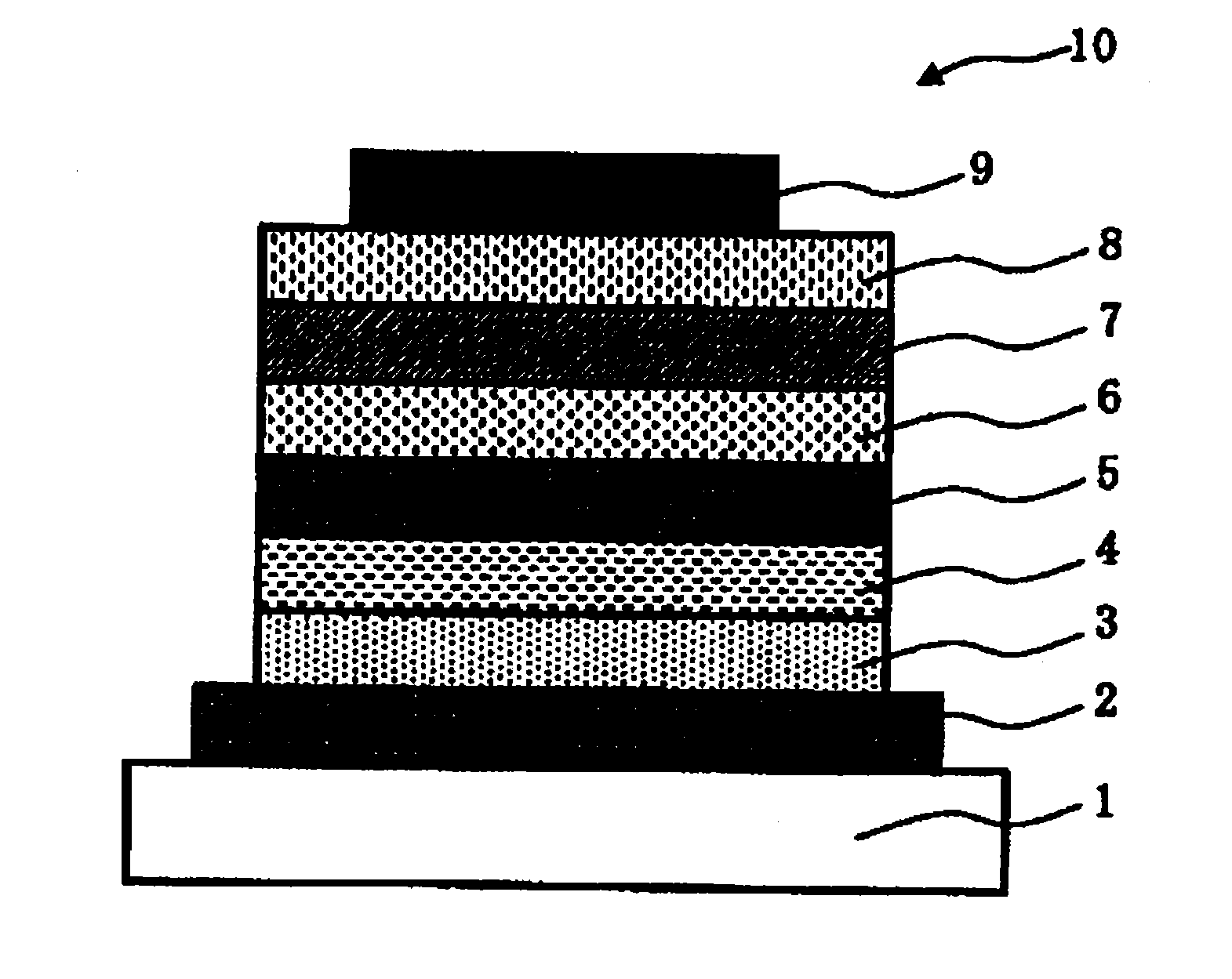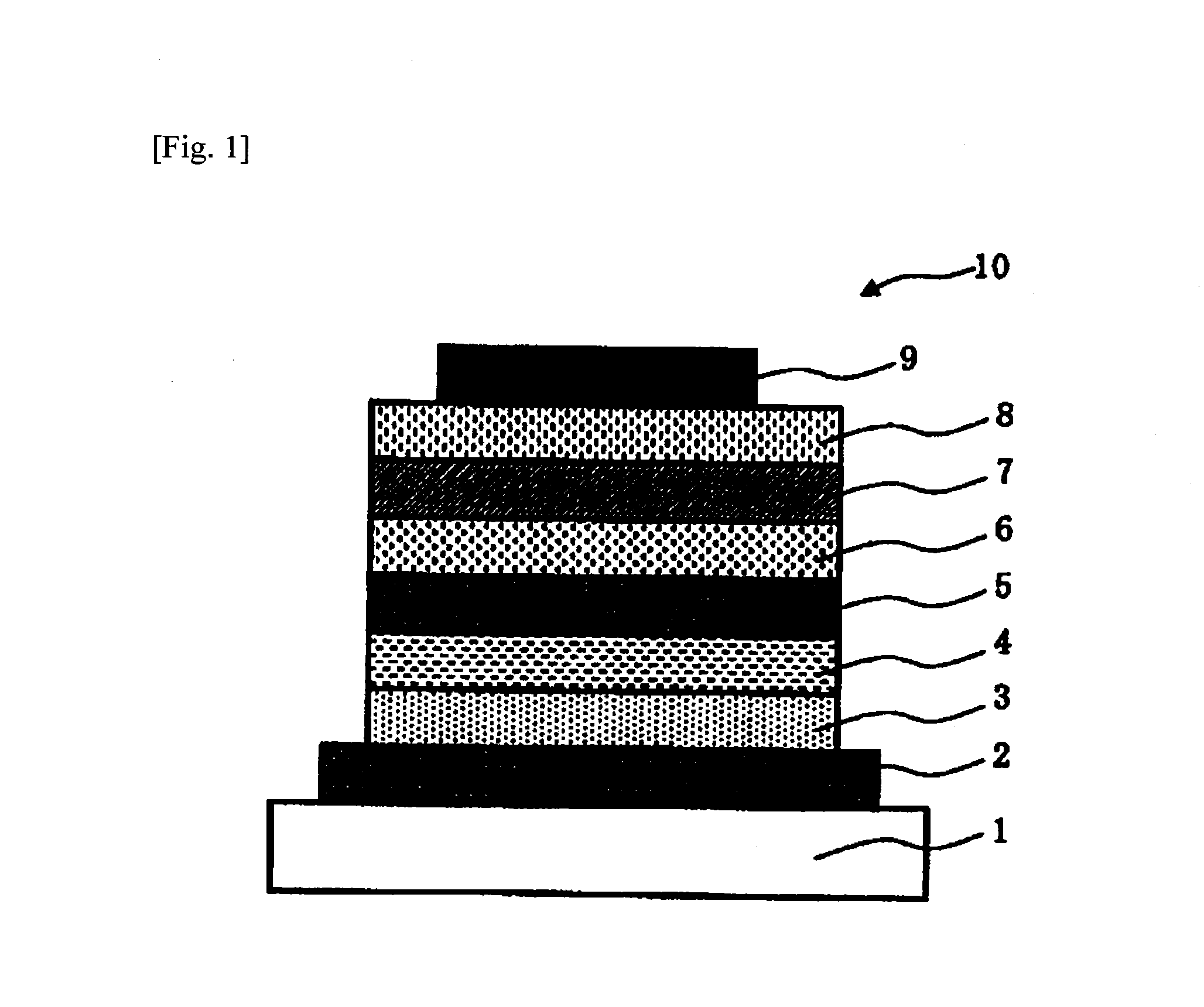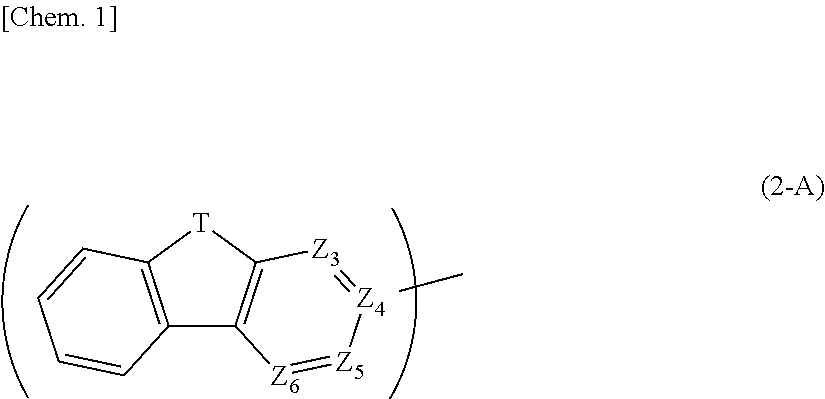Organic electroluminescent element, organic electroluminescent lighting device and organic electroluminescent display device
a technology of organic electroluminescent elements and lighting devices, which is applied in the direction of energy-saving lighting, other domestic articles, sustainable buildings, etc., can solve the problems of low light emission efficiency of the resultant element, low light emission efficiency of the element, and inability to mix materials uniformly, etc., to achieve high power efficiency, low driving voltage, and the effect of high light emission efficiency
- Summary
- Abstract
- Description
- Claims
- Application Information
AI Technical Summary
Benefits of technology
Problems solved by technology
Method used
Image
Examples
example 1
[0384]An organic electroluminescent element was produced according to the process mentioned below.
[0385]On a glass substrate 1 having, as deposited thereon by sputtering film formation, an indium tin oxide (ITO) transparent conductive film, an anode 2 was formed by patterning thereon in stripes each having a width of 2 mm, according to ordinary photolithography combined with hydrochloric acid etching. The thus-patterned ITO substrate was ultrasonically washed with an aqueous surfactant solution, washed with ultrapure water, ultrasonically washed with ultrapure water and then washed with ultrapure water in that order, then dried and further washed with UV ozone.
[0386]Next, a composition for forming hole injection layer was prepared, which has the following formulation and contains an arylamine polymer shown by the following structural formula (P-1), 4-isopropyl-4′-methyldiphenyliodonium tetrakis(pentafluorophenyl)borate shown by the structural formula (A-1) and ethyl acetate. The hol...
example 2
[0397]An organic electroluminescent element was produced in the same manner as in Example 1, except that a composition for forming luminescent layer containing the following compound (H-2) in addition to the compounds (H-1) and (E-1) as the charge-transporting materials therein and prepared to have the formulation mentioned below was used. The characteristics of the element are shown in Table 1.
SolventcyclohexylbenzeneComposition concentrationH-1: 1.313 wt %H-2: 1.313 wt %E-1: 0.875 wt %R1: 0.035 wt %G1: 0.0245 wt %B1: 0.35 wt %
example 3
[0398]An organic electroluminescent element was produced in the same manner as in Example 1, except that a composition for forming luminescent layer containing the following compound (H-3) in addition to the compounds (H-1) and (E-1) as the charge-transporting materials therein and prepared to have the formulation mentioned below using the following compound (B2) in place of the compound (B1) as the luminescent material was used. The characteristics of the element are shown in Table 1.
SolventcyclohexylbenzeneComposition concentration H-1: 1.313 wt %H-3: 1.313 wt %E-1: 0.875 wt %R1: 0.035 wt %G1: 0.0245 wt %B2: 0.35 wt %
PUM
| Property | Measurement | Unit |
|---|---|---|
| emission wavelengths | aaaaa | aaaaa |
| emission wavelengths | aaaaa | aaaaa |
| emission wavelengths | aaaaa | aaaaa |
Abstract
Description
Claims
Application Information
 Login to View More
Login to View More - R&D
- Intellectual Property
- Life Sciences
- Materials
- Tech Scout
- Unparalleled Data Quality
- Higher Quality Content
- 60% Fewer Hallucinations
Browse by: Latest US Patents, China's latest patents, Technical Efficacy Thesaurus, Application Domain, Technology Topic, Popular Technical Reports.
© 2025 PatSnap. All rights reserved.Legal|Privacy policy|Modern Slavery Act Transparency Statement|Sitemap|About US| Contact US: help@patsnap.com



